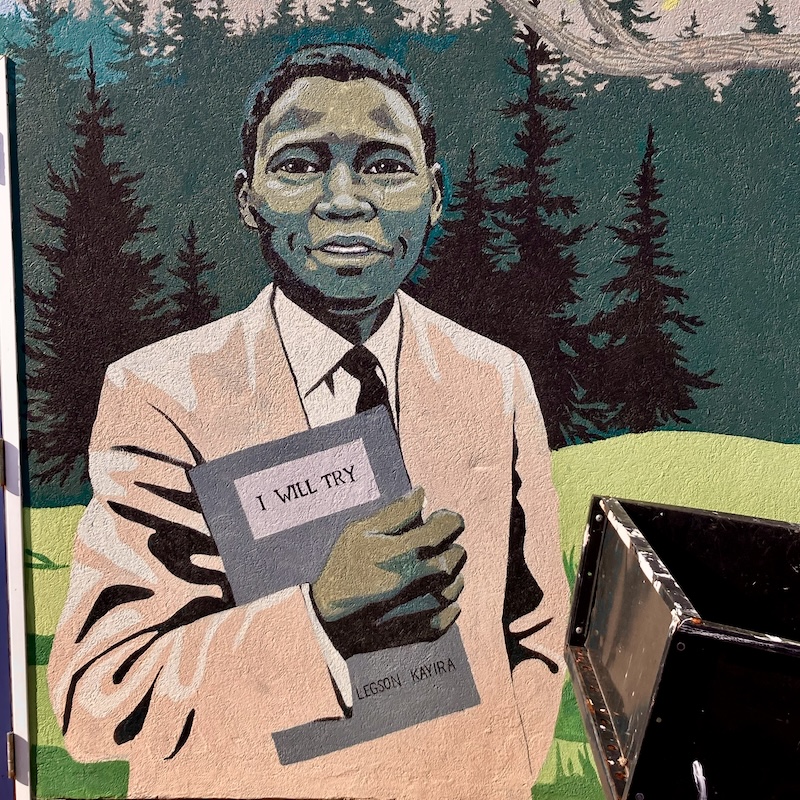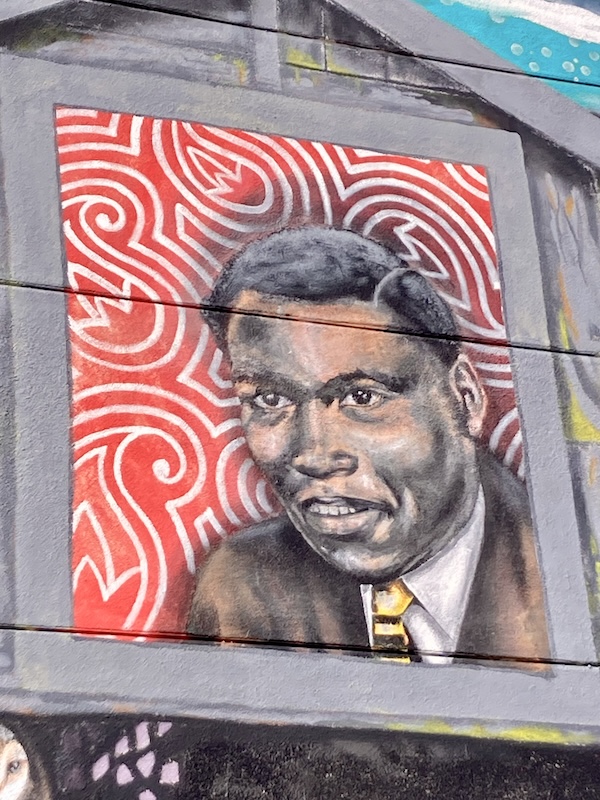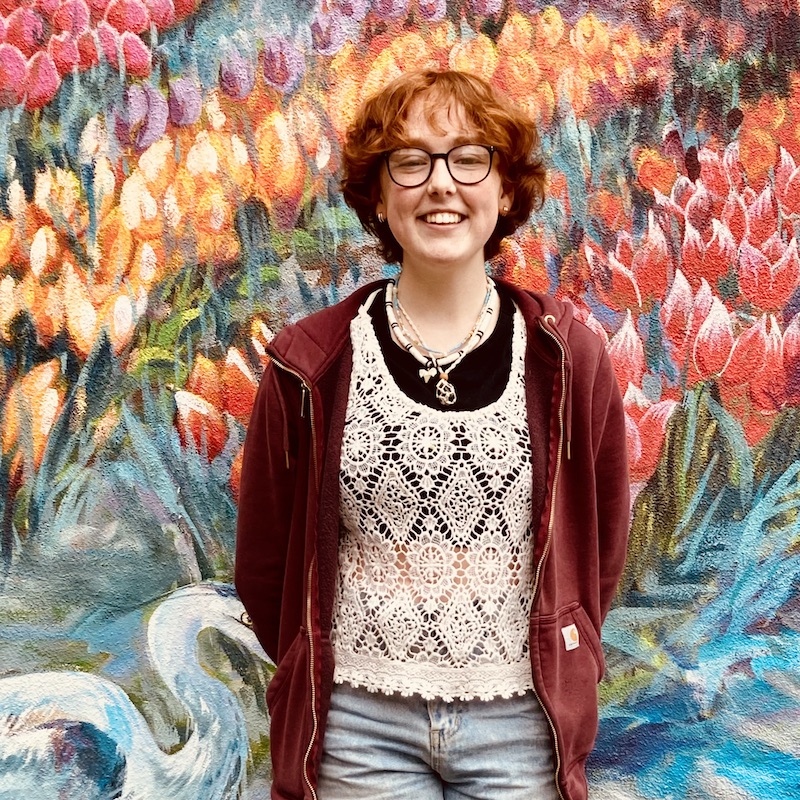The Incredible Journey of Legson Kayira: A Remarkable Story of Determination and Triumph

Legson Kayira is a relatively unknown but remarkable Malawian writer who embarked on an incredible journey in his quest for better education in America. He walked most of the African continent, and on the way he happened upon a library where he picked up a book about American junior colleges. The first page he flipped to was about Skagit Valley College, where he ultimately decided to enroll. Despite facing numerous challenges, Legson was determined to pursue his dream of education in America. In his autobiography I Will Try, Legson chronicles his journey and his life in the United States, providing a fascinating account of his struggles and triumphs along the way.
Kayira’s story begins with that of his parents, Timothy Mwenekanyonyo and Ziya Nyakawonga, and his birth. When Legson was born, his mother Ziya, who could not afford to feed him, threw him into the Didimu River and walked away. He was rescued and originally named Didimu after the river he was found in. Later, when he started school, he changed his name to Legson because he wanted a more English-sounding name. Legson never knew exactly the year or date he was born, so later in his life he settled on May 10, 1942.
Legson’s parents were part of the Tumbuka tribe and lived in the small hill village of Mpale in the Karonga district of northern Nyasaland, which at the time was a British protectorate federated with Rhodesia (now known as Zimbabwe). Legson explains in his book I Will Try how poor his family was, and how they only wore a piece of cloth to cover themselves and used it until it was no longer wearable. They only ate from the garden they tended. Legson had several siblings, but many of them died from illness, which among their tribe was thought to be the result of witchcraft. Legson’s father died from falling and hitting his head on a rock. Later, his mother gave birth to twins – a boy named Kapompa and a girl named Nthembwa.
Legson attended Livingstonia Secondary School, which was eight miles from his home and difficult to reach. He quit school multiple times when he was younger but was pushed to go back since his parents never had the opportunity to attend. At Livingstonia Secondary School he was given the motto “I Will Try,” which little did he know at the time would change his life and stay with him forever. After that, he attended school in Nyasaland for eleven years.
Kayira was expected to attend Domasi Teachers Training School. However, he had other plans. He attended a rally in support of his country’s independence, where he was inspired by Dr. Hastings Kamuzu Banda’s speech. In his autobiography Kayira wrote, “I saw the land of Lincoln as the place where one literally went to get the freedom and independence that one thought and knew was due him.” He was inspired by Lincoln and Booker T. Washington and decided to go to the United States for higher education. He announced to his village that he was going to America, but they didn’t know where it was — so, his mother sent him off with enough flour for a five-day journey. He wore his school uniform, was barefoot and penniless, and carried a small ax, a blanket, a map of Africa, a map of the world, an English Bible, and a copy of John Bunyan’s The Pilgrim’s Progress. In his book, it is mentioned that Kayira’s mother said, “Wherever you go, I shall recognize your footprints.” She then spat on his face, which may seem odd, but Kayira explained that, “spitting on one’s face was their version of kissing, but stronger. It was not only a token of love and goodwill, but also a token of remembrance.” And so, in October 1958, Kayira began his journey.
During his travels across Africa, Legson had to stop in various villages where he sometimes encountered unfriendly people. He walked barefoot and suffered injuries, which impeded his journey. However, he also met many friendly and hospitable people and made new friends. During his travels he reached Kampala in Uganda, where he found a book with a list of community colleges in the United States. He opened the book and it landed on Skagit Valley College, where he decided to apply and was granted a scholarship. He continued his journey and reached Khartoum, where he obtained a visa, and people from Skagit Valley raised money to bring him to Washington.
Two years after setting off for America, Legson finally reached the Skagit Valley. His arrival was covered by magazines, newspapers, and journalists, and he became a minor celebrity. He was invited to attend various events, including a beauty contest in Cleveland, Ohio, where he was presented with a $1,000 scholarship. He eventually decided to study political science and earned his associate’s degree from Skagit Valley College in 1963 before transferring to the University of Washington in Seattle, where he earned his Bachelor’s degree in political science in 1965. After six years, he returned to his village, but instead of staying there, he went to England on a two-year scholarship for graduate studies at St. Catharine’s College, Cambridge University.

Legson always had a passion for writing. He wrote extensively during his school years. His autobiography evolved from papers he wrote for his English classes at the University of Washington. His book I Will Try won a Northwest Nonfiction Prize for autobiography in 1965. During his lifetime, Legson wrote and published five novels that tackled social, cultural, and political issues facing post-colonial Africa. His novels include The Looming Shadow, Jingala, The Civil Servant, and The Detainee. Legson was one of the first Malawian novelists. Ironically, his work was banned in Malawi after Banda became president-for-life. Clandestinely, however, teachers who were members of the Malawi Writers Group introduced his work to students as part of their attempt to revive Malawian culture. Legson settled in London, where he continued to write while working as a probation officer. Dr. Banda banned Legson from coming to Malawi, so he was unable to see his family. He also went into hiding for a while because there were rumors of people sent by Dr. Banda to kill him.
Legson also found love in his life. He married his first wife, Carol Lawson, and they had four children – three girls and one boy. Later, he also married Julie Robertson, whom he had known since she was a young girl and whom he had met again many years later. Legson once said, “I first met Julie in 1961 when she was still a youngster. She and I went our separate ways, but many years later, our paths crossed again and we got married.” In the book I Will Try, Julie talks about her life with Legson and discusses how they had to split when they were younger due to criticism of interracial relationships. Julie also talks about their experiences together, including her trips to Africa with Legson and the things he enjoyed doing.
Legson Kayira passed away in London on October 14, 2012. Two years later, an American charitable organization called “Youth of Malawi” built a primary school in the rural Malawian village of Chimphamba and named it after Kayira. The Legson Kayira Primary School and Community Center is solar-powered, rainwater harvesting, and boasts an outdoor movie projecter. Four years after his death, Legson Kayira was finally able to return to Malawi, where his ashes were interred in Chimphamba Village during a memorial ceremony attended by his children.
Legson Kayira’s journey to America is an inspiring story of perseverance, determination, and the pursuit of education. Despite facing numerous challenges he never gave up on his dream, and his story is a testament to the power of education and the human spirit to overcome adversity. His autobiography I Will Try is a must-read for anyone looking for inspiration and motivation to overcome their own challenges and pursue their dreams. Legson Kayira may be relatively unknown, but his story is one that deserves to be shared and celebrated.

This Tales of the Magic Skagit episode was researched and written by Meyer Sign’s Skagit Valley Youth History Project intern, Morgan White.